SUMMARY
This is AI generated summarization, which may have errors. For context, always refer to the full article.
![[Newsstand] The challenge of the Leni movement: working with the campaign](https://www.rappler.com/tachyon/2021/12/TL-true-authentic-servant-leadership-December-23-2021.jpg)
Something that volunteer campaign organizer Aurelio Servando of the Robredo People’s Council in Iloilo said in the November 24 episode of On the Campaign Trail struck me as revelatory. He set it up by talking about the efforts of his network of groups to convince Vice President Leni Robredo to run for president. “We [had] been pushing her to provide that kind of change and in talks with her we were virtually imploring her, begging her, to give us hope she will run.”
We’ve had genuine presidential drafts before: Noynoy Aquino in 2010, and to a lesser extent, Rody Duterte in 2016 ran for president, in part, because a vocal public vigorously encouraged them to. Robredo too was drafted to run; that’s what “imploring her, begging her” refers to, and that’s why #LetLeniLead is the hashtag that clicked.
Then Servando said they were also looking beyond the 2022 elections.
“This battle is not only until May of 2022 but it could be until 2028 or even beyond because of course now that we succeeded in convincing Leni to run, we have to make sure that she has everything she needs to be able to run the government, the country, well. We need to shield her from the bad and corrupt elements that may still be around…. This could be our last chance for our country to turn it around, to strengthen our institutions…. And she can’t do it alone. We have to continue to sacrifice for the country from here on, not just for the elections.”
This helps explain why the Robredo candidacy is more than just a draft. In our country’s experience, a draft may start with contributions from true believers, but it always gives way to the political professionals and the professional donors. Giving Robredo the assurance that “she has everything she needs to be able to run the country well” and that her volunteers were ready to “continue to sacrifice for the country from here on” is a clear signal that, right from the start, the seeds of a genuine political movement were already part of her candidacy – and the fact that this was a possibility only with her was part of her appeal.
Heated arguments
But as I have noted in a companion piece, a campaign that is also a movement carries its own risks. The heated arguments between Robredo supporters that came into very public view in the last few weeks should have been anticipated, because they are variations on the same themes common to movements.
How does a candidate encourage a culture of participation among her supporters without the movement walking into the usual traps that a movement’s very leaderlessness creates? How does a candidate foster a spirit of creativity among her supporters without the campaign losing sight of the common, unifying script? How does a candidate promote a sense of responsiveness, of adaptability, among her supporters without the candidacy falling into confusion? The road to electoral hell is also paved with good intentions.
The sociologist Zeynep Tufekci proposed the concept of “network internalities” (the lasting lessons that movement members ought to learn collectively from the hard work of organizing, mobilizing, negotiating, and so on) to explain the risks common to contemporary movements. It is the failure to develop these internalities that leads to mixed messages, organizational disorder, de facto spokespersons with legitimacy issues, even internal fighting that can erupt into very public view.
A genuine movement must think beyond elections, and influential volunteers like Servando have already been thinking about the role of the movement in governance. “That has already crossed our minds several times,” he said. But precisely because 2022 “could be our last chance,” the movement must also do all it can to win the presidency – still and by far the most powerful office in government – in 2022. What must the movement do then – and how should it work with, how should it relate to, the campaign?
Original perspective
I believe that some of the answers may be found in Tufekci’s work. Using an original perspective that combines signaling theory and capacity theory, and guided by her research, she has focused on what social movements can do to build what she calls narrative, disruptive, and electoral capacities. These capacities enable a movement to send serious, unmissable signals to power; they also help the movement signal real power.
Narrative capacity is a movement’s ability “to frame its story on its own terms, to spread its worldview.” Disruptive capacity is the ability of a movement to “interrupt the regular operations of a system of authority,” such as through street protests. And electoral capacity is a movement’s ability either to prevent an unfriendly politician’s election or reelection, or its ability to win elective office for its own candidates.
Let me zero in on the Robredo candidacy’s struggles in building narrative capacity.
The tempests in the last few weeks that have roiled both the Robredo movement and the Robredo campaign may be understood as a continuing argument over narrative. What is THE story? Columnist Manolo Quezon’s assertion that Robredo has failed to define herself pained many of her supporters. How should the story be framed? Miyako Isabel’s suggestions, in sum, call for a “louder” Robredo. And how should the framing of the story be spread to the world? The advertising executive who I presume is behind the What a Waste of Ad Money (“wawam”) Twitter account insists that billboards should carry more than just the names, the brands, of Robredo and her running mate, Senator Kiko Pangilinan.
They all have a point. But.
Clear picture
An outdoor advertising campaign can be run in stages, in the exact same way a political campaign is. Nick Joaquin’s classic reportage on Ninoy Aquino’s improbable Senate victory in 1967 paints the clearest picture we have of the general outline of a multi-stage political campaign. The sequence of stages is determined by the following themes:
- Who is the candidate?
- Why vote for the candidate?
- Vote for the candidate!
If the large billboard put up outside the Monasterio de Sta. Clara in Quezon City, the subject of criticism, is a stage-1 reintroduction of Robredo and Pangilinan, then both movement and campaign should welcome it. Both candidates have been vilified by disinformation operations for years; they need it. (And in itself, such a large and costly billboard, hosted by religious sisters, already sends a powerful signal, to both supporters and prospective donors.) But if that billboard stays the same until May, then the criticism is valid; the ad would prove in the end to be a wasted opportunity.
Quezon’s conclusion that Ferdinand Marcos Jr. has successfully claimed the mantle of change at this point in the election cycle is, it must be said, accurate. But his reasoning – “He did so, by means of his ad” – is way off the mark. Junior is where he is today largely because of two factors: the many years the Marcoses have invested in gray and black operations in digital and social media, and the effective rehabilitation of the Marcoses by and under President Duterte. This is not to say that Junior’s windmills ad is not effective propaganda; it is, because the ground has been so assiduously prepared.
Tougher image
Miyako’s critical diagnosis of Robredo’s media and communications strategy received a grateful acknowledgment from Robredo herself. I have heard the same criticism, but usually without Miyako’s surpassing self-assurance: Even former Duterte voters who are fully intending to vote for Robredo have said to me that she is clearly the right choice – but they wish she had a tougher image.
The December 2021 Pulse Asia results are an opportunity for both the movement and the campaign to take stock; Robredo’s jump is bracing, but Marcos Junior’s leap is even more impressive. How does this impact on narrative?
The movement must recognize that it is the responsibility of the campaign to define and develop the candidate’s story and image; at the same time, the campaign must continue to acknowledge that the best part of that story and that image is precisely that which the movement’s thousands of volunteers respond to: authentic (and effective) servant leadership. The challenge is to persuade the still-unconverted that service is in truth tough, brave, hard, loud.
Candidate and candidacy must faithfully reflect the hopes of both the true believers and the still-to-be-converted. – Rappler.com
Add a comment
How does this make you feel?
![[Newsstand] The challenge of the Leni campaign: Managing a movement](https://www.rappler.com/tachyon/2021/12/tl-robredo-managing-movement.jpg?fit=449%2C449)
![[Newspoint] Improbable vote](https://www.rappler.com/tachyon/2023/03/Newspoint-improbable-vote-March-24-2023.jpg?resize=257%2C257&crop=339px%2C0px%2C720px%2C720px)
![[Newspoint] 19 million reasons](https://www.rappler.com/tachyon/2022/12/Newspoint-19-million-reasons-December-31-2022.jpg?resize=257%2C257&crop=181px%2C0px%2C900px%2C900px)
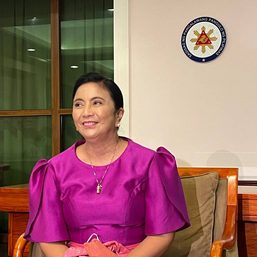

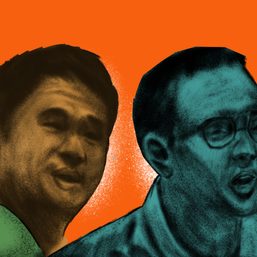
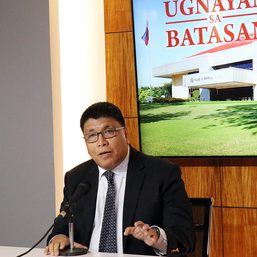
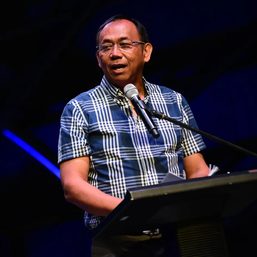
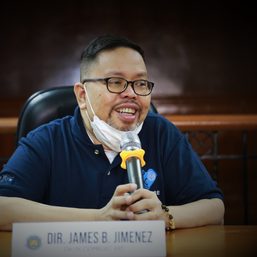
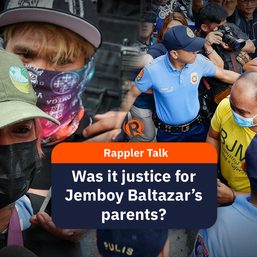
![[New School] Tama na kayo](https://www.rappler.com/tachyon/2024/02/new-school-tama-na-kayo-feb-6-2024.jpg?resize=257%2C257&crop=290px%2C0px%2C720px%2C720px)
There are no comments yet. Add your comment to start the conversation.